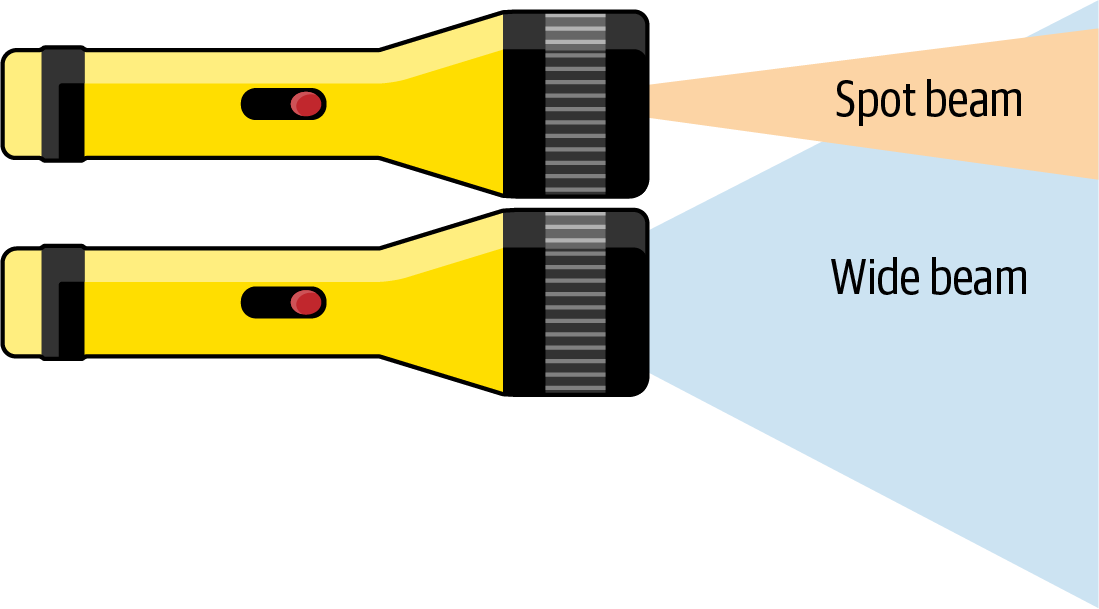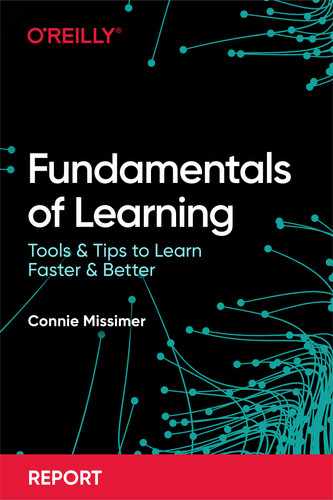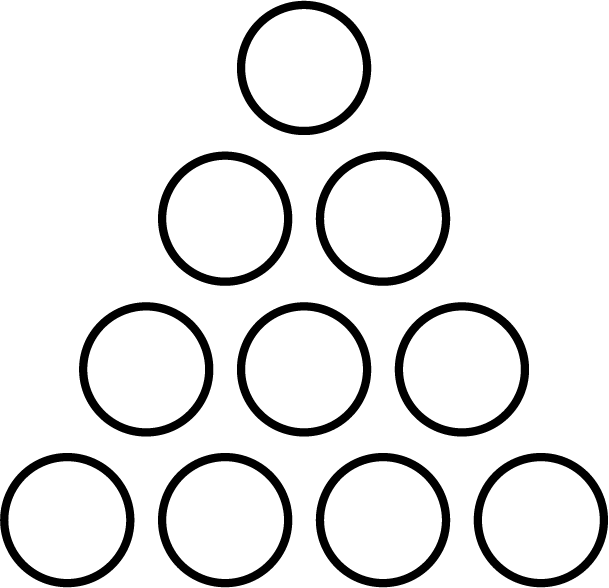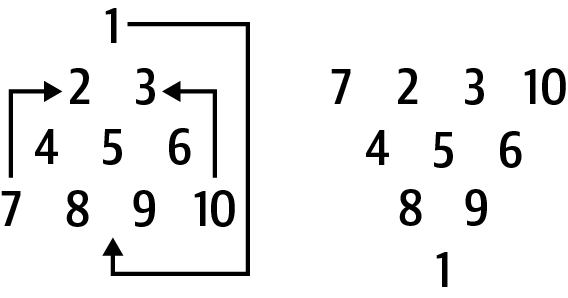Chapter 3. From Precise to Fuzzy Learning, and Quizzing Yourself
One of the more interesting and yet perplexing findings in today’s research about learning techniques has to do with focused versus diffuse thinking. It definitely deserves some spelling out, since once you understand the concepts of focused versus diffuse thinking and of quizzing yourself, you’re 90% of the way to taking the Laura path. We’ll also dig a little deeper into the other method that is so important for learning: asking or quizzing yourself about the material you have just read—this time with a focus on focused and diffuse thinking.
Focused and Diffuse, Precise and Fuzzy
The idea of focused versus diffuse thinking is one of the most fascinating new findings about learning. Instead of spending all our time paying close attention—i.e., focusing precisely on the information at hand—it is actually more conducive to remembering if you move back and forth between what is known as “focused” and “diffuse” thinking.
I think we who come steeped in the Griselda approach have got “focused” down cold. Do we know how to focus! We have trained our brains to home in on what is before us: “What exactly is this fact in front of me?”
Diffuse learning is different. It is the brain pulling back—but not entirely away!—in order to go for a broader understanding. It is doing a fuzzy, generalized kind of thinking. You could think of the difference in terms of a flashlight with two settings. As you can see in Figure 3-1, one is a narrow spot beam, representing our brain in focused mode; the other is a wide beam setting that, while dimmer, is illuminating the bigger picture.

Figure 3-1. Spot beam for focused thinking, wide beam for diffuse
This notion fits in well with the idea of breaks and naps as actually facilitating learning, in the sense that it is a different way of exercising your brain. Think of the value of cross-training in sports, or of switching gears from studying a subject closely to going out for a walk and musing about the subject.
The other aspect of this is moving from focused to diffuse and back, toggling between them as you learn (see Figure 3-2), which we’ll discuss shortly.

Figure 3-2. Toggling back and forth between focused and diffuse thinking
You can notice yourself doing something like this if you’re trying to remember a name that has slipped your mind. Focusing too hard seems to make the item move further away from memory! But just keeping it in the back of your mind—rather like having something bubbling on the back burner of your stove—may be a better way to allow that annoying thing to suddenly appear.
But this depiction alone does not sufficiently delve into the approach of focused and diffuse thinking. For that, we require another great tool in our learning armamentarium: questioning what exactly diffuse thinking is all about.
Quizzing Myself on Focused vs. Diffuse
You may recall (if not, that’s all right!) that quizzing yourself is one of the most powerful ways to learn, per Chapter 1. So here I am quizzing myself. What is focused versus diffuse thinking?
OK, focused means looking at exactly the fact or claim I need to remember. Focused thinking about this report would be something like, “The report had as its first chapter a quiz on what I thought was true or false about learning,” starting with this list:
-
Keep rereading the material
-
If you take breaks, you’re that much further from your goal of knowing
-
Take the material step by step
-
Pose questions about the material to yourself
-
After you learn, memory of the material steadily degrades
-
Keep a tight focus on each element until a bigger picture emerges
This list is highly specific—focused!
Got it. Now, what would diffuse thinking about this report look like?
Hmm…I have to look away from the report and gaze off into the distance. Somewhere, my brain pulls out, “It’s kind of a ragbag of different ideas that, if I practice them together, will make my learning easier. And this has support from good research. Um, and there are some other things in this report, but I can’t remember them.” But what do we get out of pulling away to diffuse thinking on this topic?
Quizzing Myself More to Remember More
I don’t know about you, but I am not satisfied with my understanding of diffuse thinking. It seems so…well, diffuse, making me feel that I haven’t entirely grasped the concept. OK, it’s wide beam, fuzzy thinking, but what is that exactly? Is it any time I look away and gaze off into the distance? If I gaze off and start to think about lunch, am I still somehow keeping this report on that back burner and doing diffuse thinking?
You can see here that I’m pushing myself further, asking myself questions about diffuse thinking in order to remember it better. I am interleafing one learning technique to better recall another!
Frankly, to me, diffuse thinking is still amorphous—but am I being too demanding in wanting it more clearly defined, more…focused? Perhaps that is just unfair. Whatever is precisely going on, we are laying down additional neuronal connections and, in the case of diffuse thinking, finding that “gist” of the subject that our brain so enjoys.
The following math teaser is one example to try to illustrate how diffuse thinking can help unlock a problem resistant to a focused approach. The notion here is that this problem can be more easily solved by diffuse thinking.
Summary
We looked in more depth at the technique of moving between focused and diffuse thinking about a subject. We also quizzed ourselves about the exact meaning of “diffuse,” thereby laying down more neurons to help recall this approach. A quick geometric puzzle was an example of the way in which diffuse thinking becomes an indispensable aid to the solution. Finally, do you recall anything about that wacky sentence that summarizes all the learning techniques? Read no further, gaze off, and try to recall any part of the sentence. Once you’re ready, read it again (refer back to Chapter 2) to see how much you remember. Don’t be discouraged if it’s still just a couple of words. The brain needs time! Also, think about what each word in the sentence means.
In the next chapter, we’ll have some fun with association-making as well as get creative to stump ourselves. All for the good of learning!


